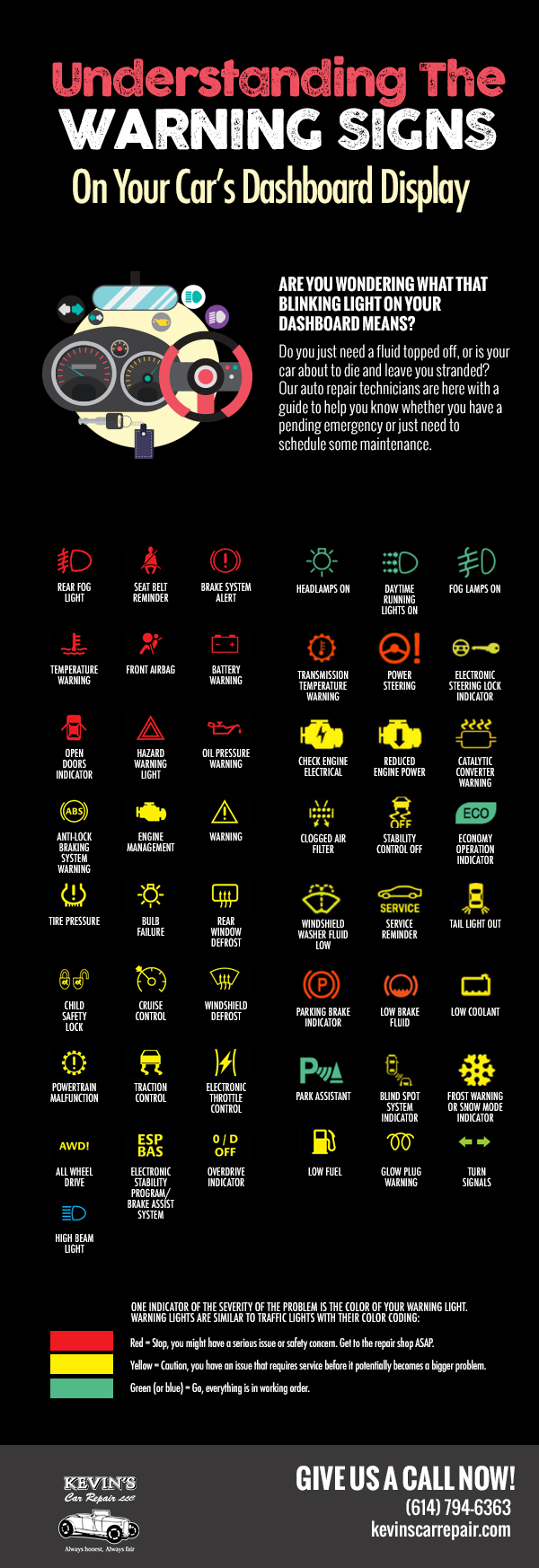Grasping The Value Of Your Vehicle'S Warning Signals: What They In Fact Stand For
Grasping The Value Of Your Vehicle'S Warning Signals: What They In Fact Stand For
Blog Article
Material Written By-Vinson Alvarado
When you're behind the wheel, those radiant caution lights on your control panel can be a little bit perplexing. Do interiorcarcleaning know what they're trying to inform you regarding your cars and truck's wellness? Understanding the relevance of these lights is vital for your safety and the durability of your vehicle. So, the next time among those lights turns up, wouldn't you wish to analyze its message accurately and take the required steps to address it?
Common Caution Lights and Interpretations
Identify usual warning lights in your cars and truck and recognize their definitions to ensure safe driving.
One of the most regular caution lights include the check engine light, which indicates concerns with the engine or discharges system. If this light comes on, it's essential to have your automobile examined quickly.
The oil pressure alerting light indicates reduced oil stress, calling for instant interest to avoid engine damages.
A flashing battery light may recommend a malfunctioning billing system, possibly leaving you stranded otherwise attended to.
The tire pressure surveillance system (TPMS) light notifies you to reduced tire stress, impacting car stability and fuel efficiency. Ignoring you can try here can result in hazardous driving conditions.
The abdominal muscle light indicates an issue with the anti-lock braking system, compromising your capacity to quit promptly in emergency situations.
Last but not least, the coolant temperature advising light warns of engine getting too hot, which can cause extreme damages if not settled swiftly.
Understanding these common caution lights will certainly assist you address problems immediately and preserve secure driving conditions.
Importance of Prompt Attention
Comprehending the common caution lights in your car is only the very first step; the importance of promptly attending to these warnings can not be stressed enough to ensure your safety when traveling.
When a caution light illuminates on your control panel, it's your automobile's means of communicating a possible issue that needs interest. Neglecting these cautions can bring about more severe troubles later on, endangering your safety and possibly costing you much more out of commission.
Motivate interest to advising lights can avoid break downs and crashes. As an example, a flashing check engine light could suggest a misfire that, if left neglected, might trigger damage to the catalytic converter. Addressing this immediately can conserve you from a pricey repair work.
Likewise, a brake system alerting light might signal reduced brake liquid or used brake pads, important parts for your safety and security when driving.
DIY Troubleshooting Tips
If you observe a caution light on your dashboard, there are a few do it yourself fixing pointers you can try prior to seeking specialist aid.
The first step is to consult your automobile's manual to comprehend what the particular caution light shows. Sometimes the problem can be as basic as a loose gas cap activating the check engine light. Tightening up the gas cap may fix the issue.
An additional common problem is a reduced battery, which can set off various alerting lights. Inspecting https://johnnykgaup.blogpixi.com/31489822/the-ultimate-guide-to-searching-for-reliable-car-repair-service-shops-in-your-location for deterioration and ensuring they're protected may fix the issue.
If a warning light continues, you can try resetting it by detaching the cars and truck's battery for a few minutes and after that reconnecting it. Furthermore, inspecting your car's fluid levels, such as oil, coolant, and brake fluid, can assist fix advising lights connected to these systems.
Recommended Looking at , recognizing your vehicle's warning lights is essential for keeping your vehicle running smoothly and securely. By immediately attending to these notifies and knowing what they indicate, you can stay clear of pricey repair services and prospective failures.
Bear in mind to consult your vehicle's manual for specific details on each warning light and take action appropriately to guarantee a hassle-free driving experience.
Keep informed, remain risk-free when traveling!
